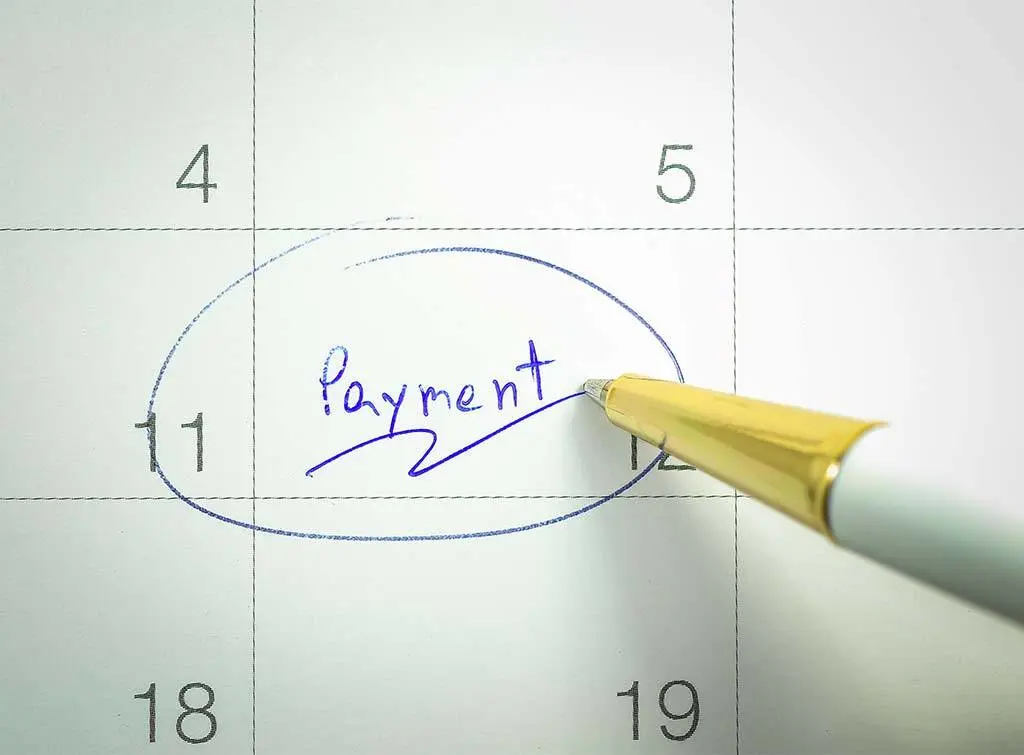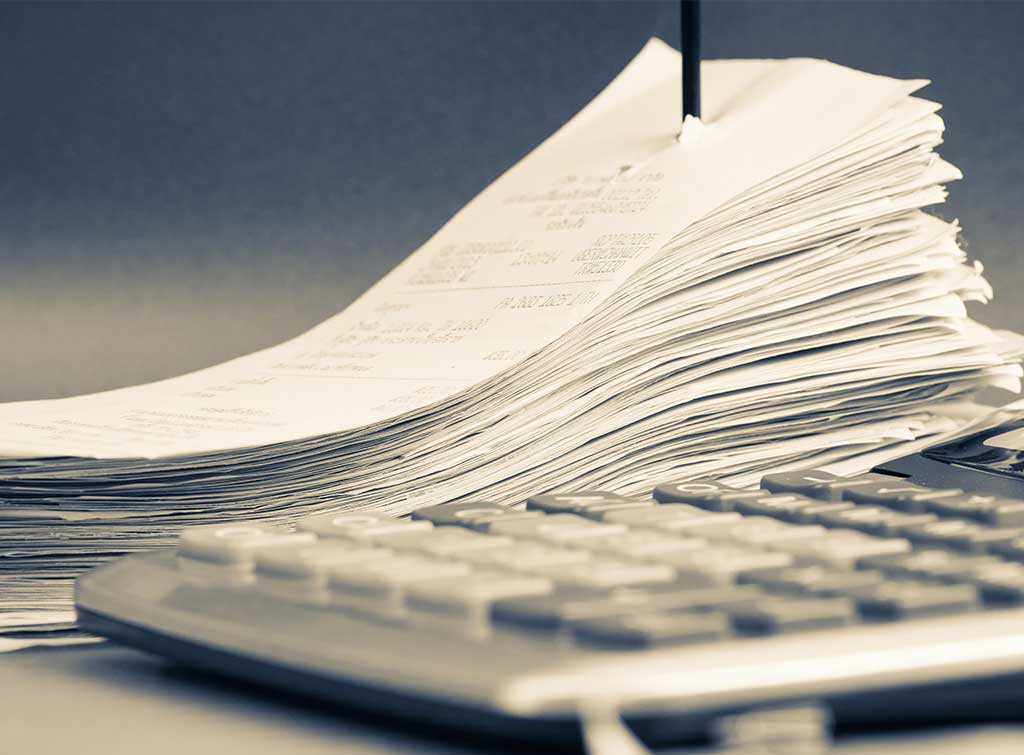Blog>Trade>Finance>Small business owner guide to PAYE
Last updated: 19 March 2024
Small business owner guide to PAYE
How to work out tax and national insurance for employees may look daunting. But it needn’t be with our guide on PAYE for small business.

PAYE for small business is usually necessary even if you only have a few employees. How to get a PAYE number starts by registering your business for PAYE with HMRC.
You can work out PAYE tax and insurance for your employees yourself. But PAYE for small business can get complicated. That’s why many tradespeople with employees choose to get someone to do it for them.
What is PAYE?
It stands for Pay As You Earn. PAYE is HMRC’s method of collecting income tax and National Insurance (NI) contributions from employees.
Employers deduct the PAYE before paying wages or salaries, usually every month.
An employee’s gross income is usually what they earn before tax and NI. Net income is what they take home in their pay packet after the deductions.

Do I have to register for PAYE?
If you have any employee who you pay £123 or more a week then you probably need to register. You do this by notifying HMRC. If employees only receive expenses or benefits from your business then you might not need to register.
How to get a PAYE number
You’ll need a PAYE number, also called an Employer Reference Number. You can get this from HMRC to get going. Regardless of size, every employee on your payroll will have their own tax code. It is these codes that are essential with PAYE for small business.
What goes into PAYE calculations?
You pay employees after making PAYE deductions. It’s not just an employee’s salary or wages that form part of PAYE calculations. You also need to include other work-related income. This might include bonuses and tips.
Employees’ sick pay and holiday pay are recorded in PAYE. So are payments during maternity or paternity leave. Student loan repayments are also collected using PAYE.

Personal tax allowances and tax rates
PAYE only kicks in once an employee earns more than the tax-free allowance of £12,570 (for the 2023/24 tax year).
The amount of PAYE an employee pays is based on what tax band they are in. This depends on how much they earn.
The income tax bands are:
Taxable income of 12,571-£50,270: basic income tax rate of 20%
Taxable income of £50,271- £125,140: higher income tax rate of 40%
Taxable income over £125,140: additional tax rate £45%
There are different bands for employees' NI. These depend on how much the employee earns.
Employers also pay NI on expenses and benefits they give employees. These include:
Company cars
Health insurance
Travel insurance
Childcare
Paying subcontractors
If you use subcontractors then other tax deductions may be necessary. You need to inform HMRC about subcontractors.
The Construction Industry Scheme (CIS) is used to deduct a proportion of the amount you pay subcontractors. HMRC uses CIS as an advance payment towards a subcontractor’s tax and NI.
How to work out tax and national insurance
Tradespeople have two main options for working out their PAYE.
You can do it yourself using payroll software. Alternatively, you can get someone to run your payroll and handle the PAYE. Specialist payroll companies provide comprehensive services, as do accountancy firms.
Payroll software has to be approved by HMRC and more or less does it all for you. Payroll software should:
Record employee details
Calculate pay and deductions
Report payroll information to HMRC
Work out how much your business needs to pay

How to pay PAYE
You can do this in a number of ways. You can:
Pay by BACS
Pay by the Clearing House Automated Payment System (CHAPS)
Use a business card online
Use online banking
Pay by direct debit
Payroll software should do it automatically. A payroll company can do it for you.
When to pay PAYE
You have to send the payment by the 22nd day of the following month. Businesses that pay less than £1,500 a month in PAYE are usually able to pay quarterly. They must pay by the 22nd of the month following the end of the quarter.
If you are late paying what you owe you could face fines and penalties from HMRC.
Keeping records
As an employer, you are expected to keep payroll records. This includes any employees you pay but who are not on the PAYE system. If you use a payroll provider, they can probably do this for you.
Updating HMRC on your workforce
Businesses have to register their employees with HMRC. You also need to let HMRC know about any changes.
You have to tell them about joiners and leavers. Also, when an employee’s status changes. This could be through retirement or if they marry. If an employee becomes a director then HMRC needs to know.
Changes in an employee’s circumstances can affect how much tax they pay. Their tax code may need to change as well.

What are PAYE employment expenses?
Business expenses incurred by employees but not reimbursed by their employer can be reclaimed. For these employment expenses, employees on PAYE can ask HMRC to change their tax code to be reimbursed.
The rule on expenses is that they must be ‘wholly and exclusively’ necessary for work. They can include:
Tools and equipment, including computers
Uniforms and work clothing
Travel and overnight expenses
Vehicles you use for work
Professional fees and subscriptions
FAQs
Why does my business need to work out tax and national insurance?
Businesses with employees usually have to deduct amounts monthly under PAYE before paying their staff.
As a business owner, what are my responsibilities for PAYE?
You have to register with HMRC, make the right deductions and pay them on time.
How do I get a PAYE number?
You'll receive this when you register your business for PAYE with HMRC.
What are PAYE employment expenses?
These are business expenses paid by employees but not reimbursed by their employer. Employees can usually reclaim them using PAYE.
How do I work out PAYE on salary?
You work out PAYE on salaries and wages by applying a tax code specific to each employee. The code relates to employees' income tax bands and national insurance bands.
Ready to take your business to the next level?
We can help you get there
DISCLAIMER
This is information – not financial advice or recommendation. The content and materials featured or linked to on this blog are for your information and education only and are not intended to address your particular personal requirements. The information does not constitute financial advice or recommendation and should not be considered as such. Checkatrade website is not regulated by the Financial Conduct Authority (FCA), its authors are not financial advisors, and it is therefore not authorised to offer financial advice.
Always do your own research and seek independent financial advice when required. Any arrangement made between you and any third party named or linked to from the site is at your sole risk and responsibility. Checkatrade blog and its associated writers assume no liability for your actions.


